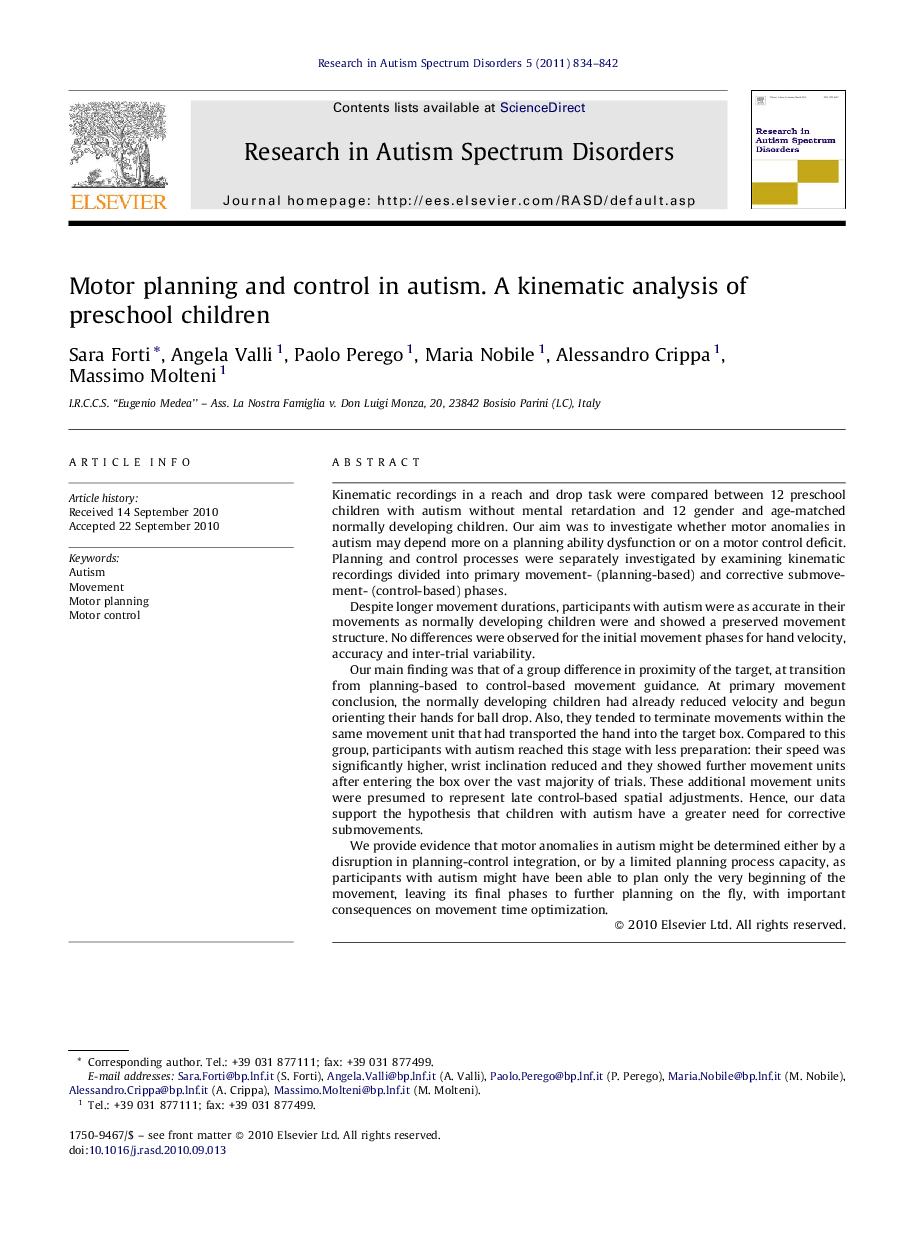| کد مقاله | کد نشریه | سال انتشار | مقاله انگلیسی | نسخه تمام متن |
|---|---|---|---|---|
| 370308 | 621856 | 2011 | 9 صفحه PDF | دانلود رایگان |

Kinematic recordings in a reach and drop task were compared between 12 preschool children with autism without mental retardation and 12 gender and age-matched normally developing children. Our aim was to investigate whether motor anomalies in autism may depend more on a planning ability dysfunction or on a motor control deficit. Planning and control processes were separately investigated by examining kinematic recordings divided into primary movement- (planning-based) and corrective submovement- (control-based) phases.Despite longer movement durations, participants with autism were as accurate in their movements as normally developing children were and showed a preserved movement structure. No differences were observed for the initial movement phases for hand velocity, accuracy and inter-trial variability.Our main finding was that of a group difference in proximity of the target, at transition from planning-based to control-based movement guidance. At primary movement conclusion, the normally developing children had already reduced velocity and begun orienting their hands for ball drop. Also, they tended to terminate movements within the same movement unit that had transported the hand into the target box. Compared to this group, participants with autism reached this stage with less preparation: their speed was significantly higher, wrist inclination reduced and they showed further movement units after entering the box over the vast majority of trials. These additional movement units were presumed to represent late control-based spatial adjustments. Hence, our data support the hypothesis that children with autism have a greater need for corrective submovements.We provide evidence that motor anomalies in autism might be determined either by a disruption in planning-control integration, or by a limited planning process capacity, as participants with autism might have been able to plan only the very beginning of the movement, leaving its final phases to further planning on the fly, with important consequences on movement time optimization.
Journal: Research in Autism Spectrum Disorders - Volume 5, Issue 2, April–June 2011, Pages 834–842